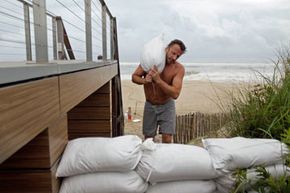Long before satellites, radar and computer models could predict the track and intensity of hurricanes and tropical storms, there was Galveston. It was 1900, and the Gulf Coast Texas city was a sitting duck. Offshore spun a powerful hurricane with winds that exceeded 130 miles (209.21 kilometers) per hour.
The storm didn't have a name, because back then no one gave hurricanes names. Forecasting storms was more guesswork than science. Before racing through the Gulf on its way to Texas, it had hammered the Caribbean. The Weather Bureau, which at the time was responsible for issuing warnings of wild weather, had done so. As experts would later determine, "many didn't heed the warnings, preferring instead to watch the huge waves" [source: Britt].
Advertisement
In the end, those huge waves devastated Galveston. When the hurricane went ashore on Sept. 8, it crashed into the city. A storm surge of 8 to 15 feet (2.44 to 4.57 meters) swamped the island and other parts of the coast. Half of Galveston's homes were swept away. By the time the storm ended, between 8,000 and 12,000 people were dead [source: Britt].
When a hurricane hits, it's usually not the wind or rain that causes the most damage. The deadliest aspect of a hurricane is the storm surge. Storm surges form as a hurricane travels over warm water. As the hurricane sucks in moisture and heat from the water, it increases in strength. The storm's strong winds slam against the ocean surface, forcing water to pile up. This wall of water then moves toward the coast, gaining energy and strength as it travels. It can take hours for a surge to build. By the time the hurricane slams into the shore, the storm surge can be a towering behemoth, a wall of water sweeping away everything in its path [source: NBCNews.com].
What can humans do to protect their property against such devastation?
Advertisement



